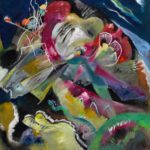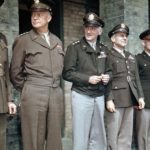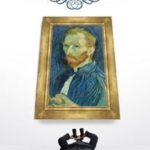(Originally published in Trendline Magazine, January 2000; updated April 2015)
Many legacies of the First World War stem from the acceleration in evolution it provided for certain aspects of the art of war. If close order attacks and traditional horse mounted cavalry were rendered obsolete by trench warfare, there were other progressive elements this “war to end war” created.
The machine gun overwhelmed the single shot rifle, and the tank and aeroplane provided new platforms for that most formidable weapon. Also becoming apparent was the necessity of easy mobility along shifting frontlines, aerial reconnaissance, as well as the almost overriding importance of artillery, not to mention the industrial complex and resources to support it.
But certainly one of the most under appreciated aspects of this war that saw “came of age” was camouflage. Until this dawning of modern mechanized warfare, close order attack and retreat required no camouflage, and even during the first couple of years of fighting, the value of camouflage seemed understood by only a few. Outdated notions reigned in the upper echelons of both German and British military organizations, and neither side fully appreciated the role camouflage might play. But the French and Italians did.
British writer and journalist H.G. Wells toured the Italian, French and British frontlines during 1916, and wrote about them in War and the Future: Italy, France and Britain at War, which was published in early 1917. The book described how Italian camouflage was designed to both disguise, as well as simulate the appearance of guns, camps, and trenches in order to draw away or confuse Austrian fire.
 In February 1915, French General Joffre created the Camouflage Department, the Section de Camouflage. Parisian portraitist – and artillery gunner Second Class – Lucien-Victor Guirand de Scévola (1871-1950) understood this new tactic, and took his cues from the coloration of animals in an effort to “break the outline.” He was promoted to commander of the department by the end of the year. By 1917 its ranks had grown to around 3000 and included the likes of André Mare, Jacques Villon, André Dunoyer de Segonzac, Charles Camoin, and Charles Dufresne. This mobile corps traveled from position to position along the frontlines camouflaging everything from observation posts to artillery to airfields.
In February 1915, French General Joffre created the Camouflage Department, the Section de Camouflage. Parisian portraitist – and artillery gunner Second Class – Lucien-Victor Guirand de Scévola (1871-1950) understood this new tactic, and took his cues from the coloration of animals in an effort to “break the outline.” He was promoted to commander of the department by the end of the year. By 1917 its ranks had grown to around 3000 and included the likes of André Mare, Jacques Villon, André Dunoyer de Segonzac, Charles Camoin, and Charles Dufresne. This mobile corps traveled from position to position along the frontlines camouflaging everything from observation posts to artillery to airfields.Given this, it is not difficult to understand the frustration H.G. Wells felt towards his own nation’s military leadership for their initial obstinacy toward camouflage. These “brass hats,” he noted, were still wearing spurs on their boots despite the fact they were nowhere near a horse!
Grudging first attempts were to feebly splash paint on guns or paint a hanger grey-green. At length camouflage was indeed adopted, albeit hesitatingly, which Wells described in his own unique way:
“At any rate very many of the British tents look as though they had been dabbed over by a protesting man muttering ‘foolery’ as he did it. With a good telescope the chief points of interest in the present British front in France would be visible from Mars.”
However, French progress and success with camouflage caused the British to appoint Solomon J. Solomon to create, with others, tank camouflage under the command of Royal Engineer Lt. Col. Francis Wyatt. Germany too had learned their lesson and turned to avant-garde artist Franz Marc, who was then serving in the cavalry, to paint what he would later call “Kandinskys,” after the famous Russian abstract artist Wassily Kandinsky (1866-1944), on tarpaulins. The increasing debt camouflage owed to abstract art was even noticed by Pablo Picasso (1881-1973), when he claimed “it is we that have created that” upon seeing a camouflage painted cannon in Paris.
 |
| British Mark I tank with the Solomon camouflage scheme |
Of course in a very clear sky or away at sea, complete invisibility was not a realistic goal. The “dazzle” pattern was developed as an offshoot of the “disruptive pattern” in order to mislead submarine commanders. It was not to obscure the true distance of the target, but to cause confusion about the proper course the captain should take for engagement. Practical tests yielded positive results and the British Admiralty ordered the entire merchant marine fleet camouflaged in October 1917.
The reported German reaction was one of amusement and belief the allies were short on normal paint. But it wasn’t long until Germany began intimidating the Allies and incorporating the dazzle pattern on their ships as well as the upper portions of their aircraft. The familiar “lozenge” pattern appeared around 1916 and culminated in its garish confusion in 1918.
But just as H.G. Wells had seen in his survey of ground based British commanders, the Royal Air Corps were reluctant to apply these patterns to their aircraft. Nevertheless, disruptive camouflage had made its irreversible impact on weaponry.
Drab-colored disruptive “tortoise shell” painted helmets appeared in the German trenches. Germany had been transitioning to “feldgrau” uniforms for field use since 1907, and a similar drab protective cover was placed over their spike helmets until those were replaced by the stahlhelm in 1916. In response to the war’s new conditions, the French adopted the “horizon blue,” or “tricolor grey,” uniforms to replace the red trousers they wore at the beginning of the war. But even with these changes, coordinated uniform camouflage was still a couple of decades away.
Related story: Mersey ferry gets the dazzle treatment from Sir Peter Blake






